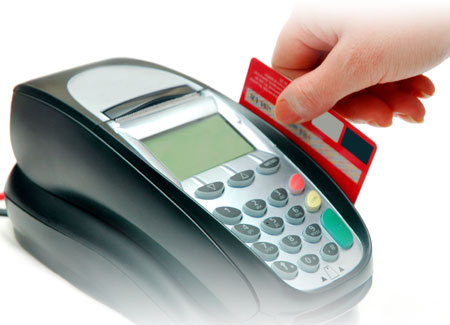 Just about every week we would be contacted by a merchant operating in some type of a high risk industry or other whose merchant account has just been terminated by a traditional U.S. payment processor — think Chase Paymentech or First Data. At first we were surprised that a payment processor specializing in low risk merchants would even bother to be looking at the types of businesses that were coming our way, never mind taking them on board. After all, in previous years we have worked with both of the aforementioned companies, as well as other mainstream ones and know very well how tight their underwriting standards are. And yet, the just-terminated high risk merchants just kept coming, and still are.
Just about every week we would be contacted by a merchant operating in some type of a high risk industry or other whose merchant account has just been terminated by a traditional U.S. payment processor — think Chase Paymentech or First Data. At first we were surprised that a payment processor specializing in low risk merchants would even bother to be looking at the types of businesses that were coming our way, never mind taking them on board. After all, in previous years we have worked with both of the aforementioned companies, as well as other mainstream ones and know very well how tight their underwriting standards are. And yet, the just-terminated high risk merchants just kept coming, and still are.
So we thought we’d share with you our observations and thoughts on why very high risk merchants are boarded by low risk processors in the first place, how likely it is that such an arrangement would survive in the long run and what to do if and when such an account is shut down. Let’s get going.
High Risk Merchants and Low Risk Processors
Let’s begin by defining “high risk” for the purposes of our present exercise. The reason this is important is that a traditional payment processor would always tell you that they do work with high risk merchants — and they do, but on a selective basis. For example, the underwriting manuals of some of the largest U.S. processors will tell you that they can process for merchants like auction houses, dating sites, dietary services, financial advisers, fortune tellers, providers of financial aid and counseling, nutraceuticals, timeshare advertisers, etc. — you get the picture.
Well, in the real world, with notably rare exceptions (don’t you just love this Greenspanism?), mainstream processors turn down all applications from merchants in the above categories and others in their risk category. Yet, as the constant stream of recently terminated high risk applicants coming my way clearly testifies, there are indeed exceptions, even though there is no way of knowing just how notably rare they are. So what’s going on?
Well, here is what most likely is taking place. Let’s say that a mainstream processor gets the application paperwork of a, say, weight-loss business. The underwriter on whose desk the application package is placed takes a look at it and sees that everything checks out: yes, the merchant is high risk, but is not unqualified, all documents are in order, the financial statements look good, the business history is solid, the personal and business credit reports both check out, there is plenty of money in the bank to support the operation and the merchant’s contact is a very nice and clever person, one you can certainly do business with. It seems as though this is a business that cannot be all that high risk, after all.
So our underwriter prices the merchant accordingly (in fact, traditional processors don’t even mark up higher risk applicants all that much), places a 10-percent reserve on its funds, tells his contact at the merchant that they will keep a close eye on their performance during the first few months and gives it the green light. The underwriter has done a great job at signing up a good-looking business and the merchant has secured a low-cost and high-quality merchant account. Everyone is happy! Well, unfortunately this is not the end of the story, it never is.
When Things Go Wrong
There are two equally-likely scenarios for what could take place with our newly-boarded business and its merchant account in the first few months (usually up to six months) of payment processing. The first one revolves around a review of the merchant. Now, such a review doesn’t necessarily have to be prompted by any event, but could just be an examination of this particular underwriter’s recent work by her boss or it could be done as a matter of routine by the processor’s risk management department.
Whatever the reason, however, the reviewer may not see the merchant in quite the same light as the original underwriter. After all, the merchant under examination operates in a very high risk industry, whereas the processor specializes almost exclusively in low risk merchant accounts. Alternatively, the processor may have recently revised its underwriting policy, which could have had an adverse effect on the particular industry into which our unfortunate merchant operates. The upshot is typically a call to the merchant and a termination notice.
The other scenario revolves around a spike in the merchant’s chargeback or decline rates, which would automatically place the merchant under review. Now, bear in mind that the chargeback rate we are talking about doesn’t really need to “spike” for a review to be initiated. A mere uptick to, say, 0.3 or 0.35 percent on, say, the third month of operation would do the trick, even as such a ratio would still be well below the penalty thresholds placed by MasterCard and Visa.
At this point the merchant’s funds would be immediately frozen until the processor convinces itself that the merchant can bring the chargeback and / or decline rate back down to a level it could more easily live with. That being said, however, once the processor initiates the review, it is extremely unlikely that our high risk merchant would be given a second chance — after all, as we keep repeating, the merchant under examination operates a very high risk business and has now demonstrated that it cannot be trusted to keep a firm grip on its chargebacks. So what is our low risk processor to do? And so the termination notice is sent out to the hapless merchant.
The point is that traditional payment processors are not really committed to serving the needs of high risk merchants, even if their underwriting guidelines indicate otherwise. The biggest issue here is that a mainstream payment processor lacks the flexibility needed to work with high risk merchants, even as it is perfectly well equipped to do so. See, once a merchant is boarded by such a processor, it is immediately placed into the group of “active merchants”, alongside gas stations, supermarkets and convenience stores, and is expected to behave just like them. The thing, of course, is that there is a reason why some industries are labeled as “high risk”, while others are not and a weight loss (in our example) website’s risk exposure can never be brought down to a gas-station level. And if a processor is unwilling to account for and tolerate the difference, the relationship will never work, which is exactly what all of the terminated high risk merchants which are contacting us have come to realize.
So is it an error for a high risk merchant to contact a mainstream processor? Well, not necessarily. A Chase Paymentech or First Data could provide your business with a high-quality service, if you can get it, at reasonable terms and at a time when a high risk processor may not be willing to consider your application. The thing is that UniBul and all of our competitors that I can think of work primarily with already-established businesses, which generate solid processing volumes (we may have to get into the reasons for why we do this in a future article). If your business hasn’t grown to a sufficiently large size, you may well be out of luck — it’s a tough world out there if you operate a newly-formed high risk business. On the bright side, once your traditional processor has shut your account down, we will be more than happy to welcome you.
What Our Customers Are Saying
UniBul is ranked based on 159 user reviews.
UniBul enables American and international businesses to accept payments for the things they sell on their websites.

















